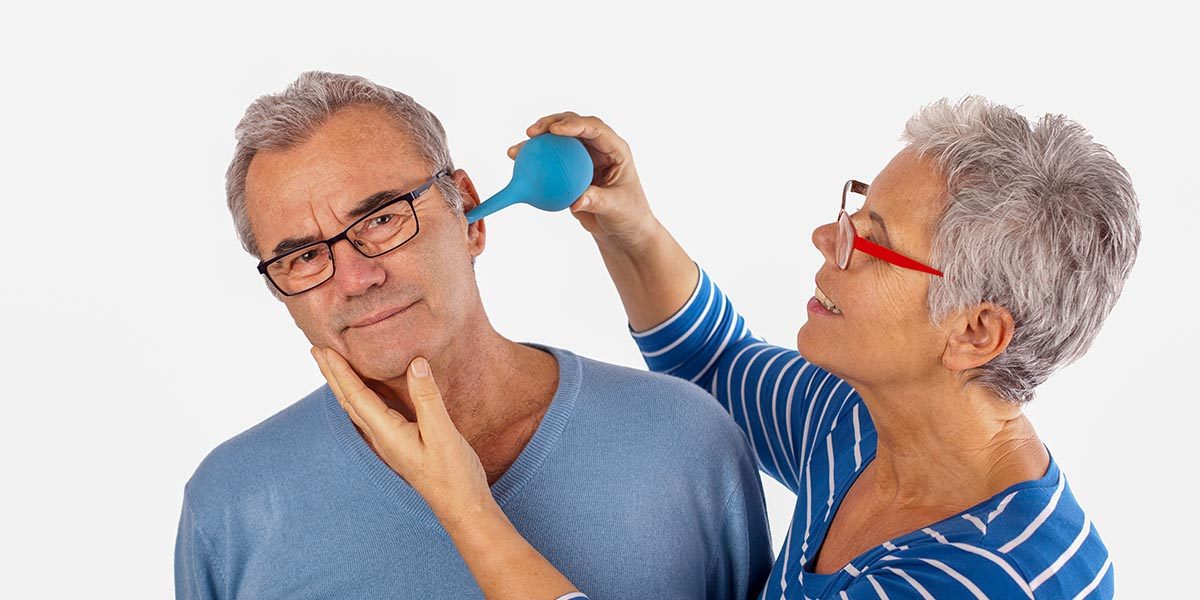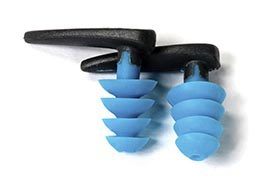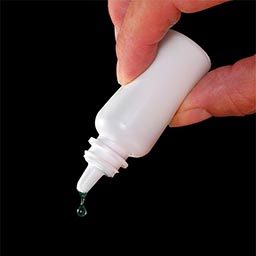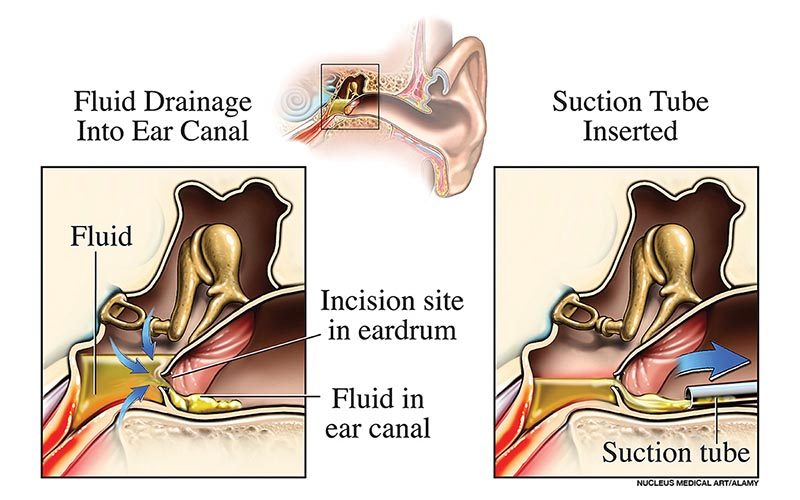People are aware of their ears in many ways. They take prominent place on the head, and thus aesthetic concerns sometimes compete with health concerns. Natural protection of the skin of the ear canal involves a wax, which in some cases may become a health nuisance and cause real medical issues. Some people perceive the wax as a hygiene issue and overzealously try to get rid of it. This can cause problems of its own.
Outdoors activities, especially water sports, expose ears to cold, wet and overly warm conditions, which can damage ears. There have been many proposed commercial solutions that supposedly will mitigate the risk of ear injury or damage. Unfortunately, few such products have been tested by health authorities. In this section, we will discuss aural hygiene and medications as well as earplugs (a device we do not endorse for divers) and ear ventilation tubes.
In this chapter, you’ll learn about:
Aural Hygiene
Having a clean ear canal is important for divers. In extreme cases, earwax can form a plug and trap air between itself and the eardrum, which can cause an “explosive” tympanic membrane perforation that tears outward instead of the more common inward perforation.
In addition, an earwax plug could prevent water from chilling one ear, while the other is naturally chilled by water filling the ear canal. This temperature differential between the two ears causes caloric vertigo.
Finally, a wax plug may prevent proper drainage from the ear canal. The retained moisture may cause softening of the skin and pave the road to infection.
So, how should you clean your ears?
The Wrong Ways
Avoid cotton-tipped swabs. The cotton-tip applicators may push wax deeper into the ear, making wax removal more difficult. In addition, the ends of the cotton-tip applicators can detach and be left in the ear canal. In a few days this usually results in a severe ear-canal infection. If this happens, the cotton should be identified and removed by a qualified physician. Do not ever attempt to do this yourself; you could tear your eardrum.
Handling Insect Infections
Occasionally, people who sleep outdoors or who live in warm areas can get insects in their ears. An insect in the ear can be an alarming experience. For removal, you’ll need a cool head, especially if the insect is still moving or stinging.
In the field, you can use rubbing alcohol, which rapidly drowns the insect and cleanses the ear canal. It is also acceptable to use a bulb syringe filled with a warm soapy water (such as baby shampoo) and hydrogen-peroxide solution. If this is unsuccessful, get medical help right away. The preferred method is removal by a qualified physician with special instruments and a microscope.
The Right Way
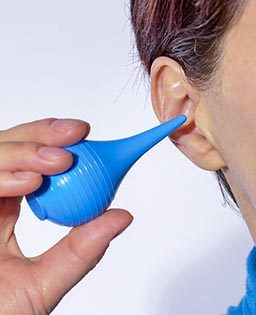
So, how should you clean your ears? When you bathe, occasionally wash your ears with a bulb syringe filled with warm soapy water and hydrogen-peroxide solution. On a diving trip, use a mixture of half white vinegar and half rubbing alcohol after a day’s diving; this serves to cleanse and dry the ear canal as well as change the pH balance to make the area less prone to bacterial infection. This can also help prevent swimmer’s ear (otitis externa).
If you have a hard time getting water out of your ears, try using a hair dryer. It’s a good idea to lift the ear upward and back to straighten the ear canal and then to blow warm dry air into the ear canal for five minutes. Take special care to ensure the air is not too hot.
Remember that ear care is as basic and important as the care of any of your other diving equipment.
Earplugs
Earplugs are devices that occlude the external ear canal. They are primarily used to block the pressure of water on the eardrum. Generally, earplugs should not be used by divers.
Procedure in Practice
Standard solid earplugs create an air space that cannot be equalized while diving, making them generally unsafe for diving; however, some divers use earplugs in special situations.
The main concern is that water pressure could wedge the plug into the ear canal. If this occurs, there is risk of external ear barotrauma. To address these concerns, some manufacturers promote the vented earplug, which has a small hole for venting between the water and the ear canal. The holes typically have a valve for pressurization without letting water enter the ear canal.
Most manufacturers of vented plugs emphasize the ease with which their products equalize and recommend that divers clear their ears frequently while wearing the earplugs to maintain proper pressurization. However, these assertions have not been independently tested. There is not enough data or evidence to recommend the use of plugs for divers. The risks of complications underwater from malfunction or removal of an earplug are real and can potentially place the diver at increased risk for injury.
Eardrops
Eardrops are a solution of medications intended for application in the external ear canal.
Prophylactic Use of Eardrops
For most divers, eardrops are not necessary after diving. The purpose of most eardrops is to prevent external ear canal infections (known as otitis externa or swimmer’s ear). Infections of the ear canal are associated with persistent moisture as well as local skin trauma, which can result from inserting cotton swabs or other objects into the ears that can damage the thin skin lining the ear canal. As DAN medical information specialists are fond of saying, “Don’t put anything smaller than your elbow in your ear.” Persistent moisture and local skin trauma can enable bacterial overgrowth and infection.
Eardrops are formulated to help dry the ear after exposure and lower the acidity (pH), making the external ear canal an unfriendly environment for bacterial or fungal colonization and infection. Common ingredients include acetic acid (the active ingredient in vinegar), boric acid, aluminum acetate, sodium acetate, isopropyl alcohol and glycerin. The acids alter pH, which retards bacterial growth; aluminum acetate and sodium acetate are astringents, which shrink tissues. Isopropyl alcohol helps dry the tissues, and glycerin may help lubricate the skin to prevent excessive drying.
For divers plagued by swimmer’s ear, gently rinsing the ears with freshwater after each dive may help. Drying the ears with a hair dryer may also be helpful, but take care to ensure the air is not too hot.
Therapeutic Use of Eardrops
Eardrops can be prescribed by your physician to treat infection or inflammation of the external ear canal. These drops may contain antibiotics and/or steroids.
Note: It is important to never put drops into the ear canal if eardrum rupture is suspected. Normally the eardrum serves as a barrier to the middle-ear space. If ruptured, contamination or medications harmful to the inner ear can gain access.
Fitness to Dive
Prophylactic ear drops are used to prevent external canal infections during repetitive multiday diving. If you feel ear pain, you should stop diving and have your ear evaluated. Divers diagnosed with an ear infection or ear injury should not dive before fully healed and cleared by a physician.
Ear Ventilation Tubes
Ear ventilation tubes are small tubes that are surgically inserted through the eardrum to enhance drainage and equalization.
Procedure
Small ventilation tubes may be surgically inserted through the eardrum (tympanic membrane) to help interrupt a cycle of repetitive middle-ear infections. The infection process causes swelling and inflammation in the Eustachian tubes, preventing proper drainage; the ventilation tubes enable drainage from the middle ear until the Eustachian tubes normalize. Inserting the ventilation tubes through a small incision in the tympanic membrane (myringotomy) usually corrects this situation.
The tubes are not meant to be permanent implants and usually fall out on their own or are removed by the physician. The small incision usually heals shortly after the tubes are removed. In rare cases, a small hole may remain if the tubes are left in for a long period of time. This situation can be tested for and is best addressed by your physician. It is unlikely that the tubes are still in place after more than a few years.
Fitness to Dive
Diving is not recommended while the tubes are in place as they will allow water to enter the middle ear, risking vertigo and infection. After the ventilation tubes are removed or come out, adequate time for healing must be allowed (at least six weeks). Middle-ear and Eustachian tube function must be confirmed as normal before diving
is considered.
A bigger problem may be scarring of the Eustachian tubes as a result of the chronic ear infections. This can make ear equalization difficult for the diver. Currently, there is no surgical procedure that can correct a partially obstructed Eustachian tube.
Children and adults alike need immediate attention for symptoms of middle-ear infection and barotrauma. Symptoms may include but are not limited to pain; ringing or roaring in the ears (tinnitus); a sensation of partial, decreased or muffled hearing; and drainage from the ear canal.
